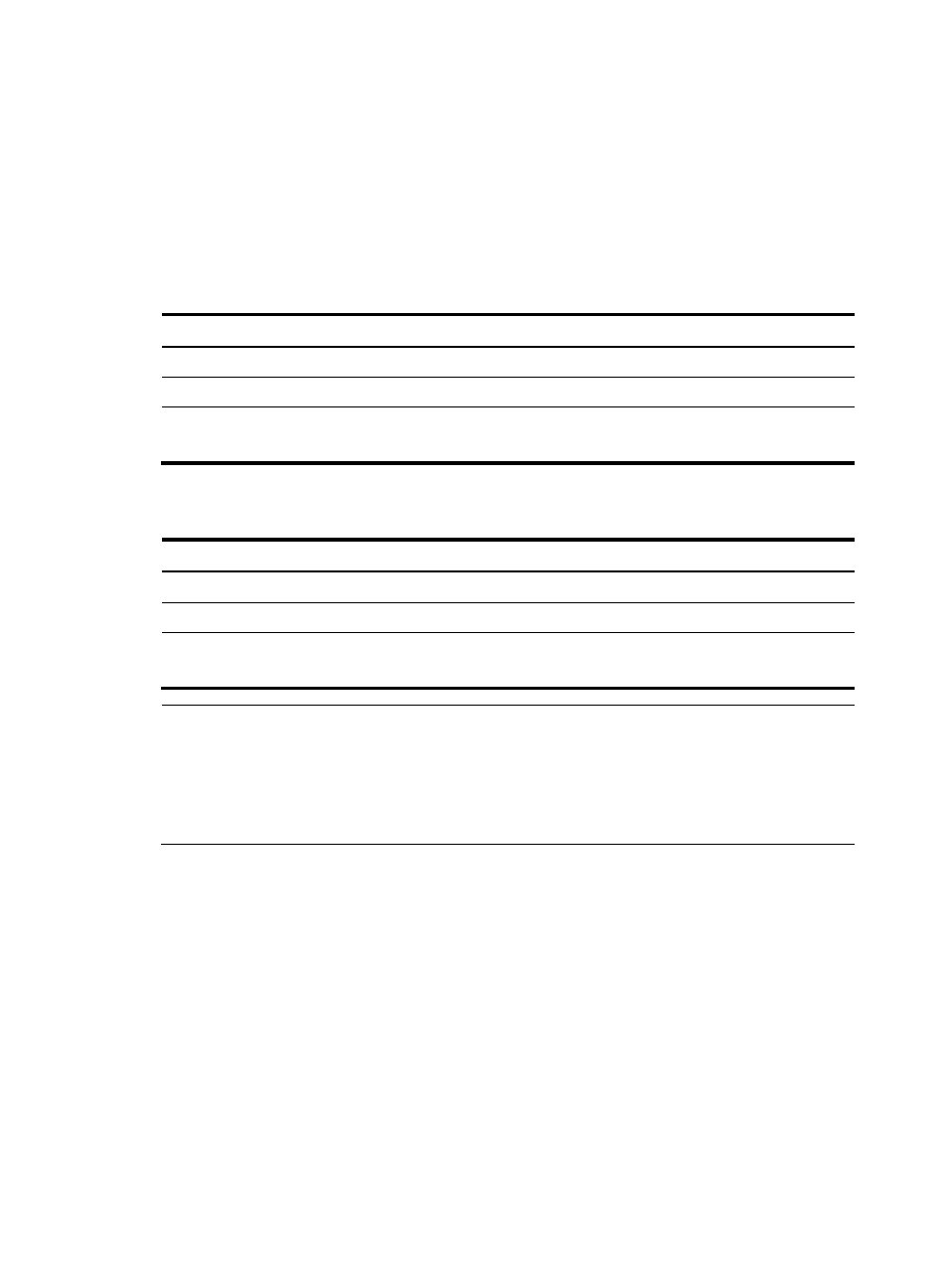Configuring the next hop attribute – H3C Technologies H3C S10500 Series Switches User Manual
Page 231

216
problem. The following output is the BGP routing table on Router D after the comparison of MED of routes
from each AS is enabled. Network 10.0.0.0 learned from Router C is the optimal route.
Network NextHop MED LocPrf PrefVal Path/Ogn
*>i 10.0.0.0 3.3.3.3 50 0 200e
* i 10.0.0.0 2.2.2.2 50 0 300e
* i 1.1.1.1 60 0 200e
BGP load balancing cannot be implemented because load balanced routes must have the same AS-path
attribute.
Follow these steps to enable the comparison of MED of routes from each AS:
To do…
Use the command…
Remarks
Enter system view
system-view
—
Enter BGP view
bgp as-number
—
Enable the comparison of MED of routes
from each AS
bestroute compare-med
Optional
Not enabled by default
Enable the comparison of MED of routes from confederation peers
Follow these steps to enable the comparison of MED of routes from confederation peers:
To do…
Use the command…
Remarks
Enter system view
system-view
—
Enter BGP view
bgp as-number
—
Enable the comparison of MED of routes
from confederation peers
bestroute med-confederation
Optional
Not enabled by default
NOTE:
The MED attributes of routes from confederation peers are not compared if their AS-path attributes contain
AS numbers that do not belong to the confederation, such as these three routes: AS-path attributes of them
are 65006 65009, 65007 65009, and 65008 65009; and MED values of them are 2, 3, and 1. Because
the third route contains an AS number that does not belong to the confederation, the first route becomes
the optimal route.
Configuring the next hop attribute
By default, when advertising routes to an iBGP peer or peer group, a BGP router does not set itself as the
next hop. However, to ensure a BGP peer can find the correct next hop in some cases, you must configure
the router as the next hop for routes sent to the peer.
For example, as shown in
, Router A and Router B establish an eBGP neighbor relationship, and
Router B and Router C establish an iBGP neighbor relationship. When Router B advertises a network
learned from Router A to Router C, if Router C has no route to IP address 1.1.1.1/24, you must configure
Router B to set itself as the next hop (3.1.1.1/24) for the route to be sent to Router C.